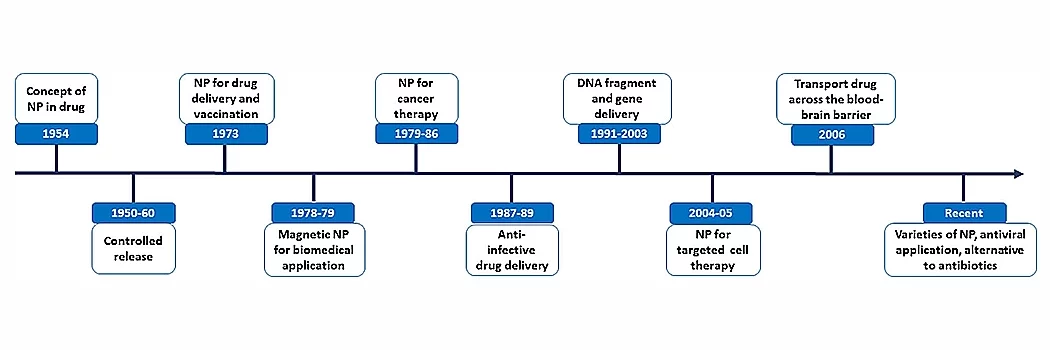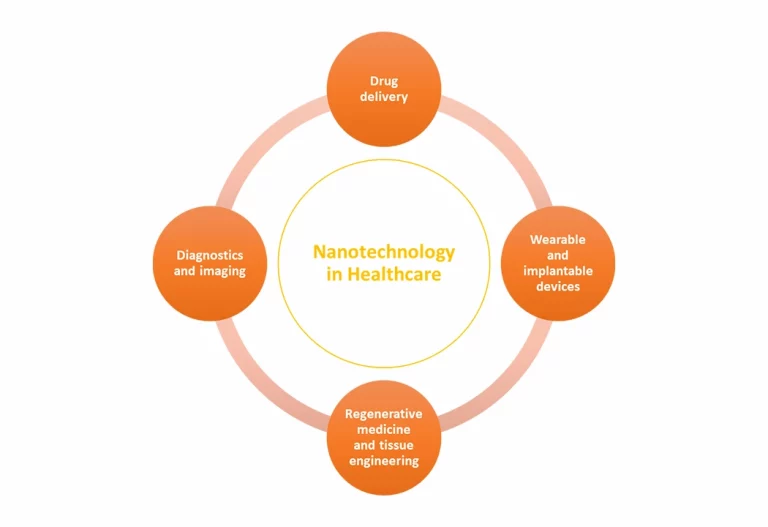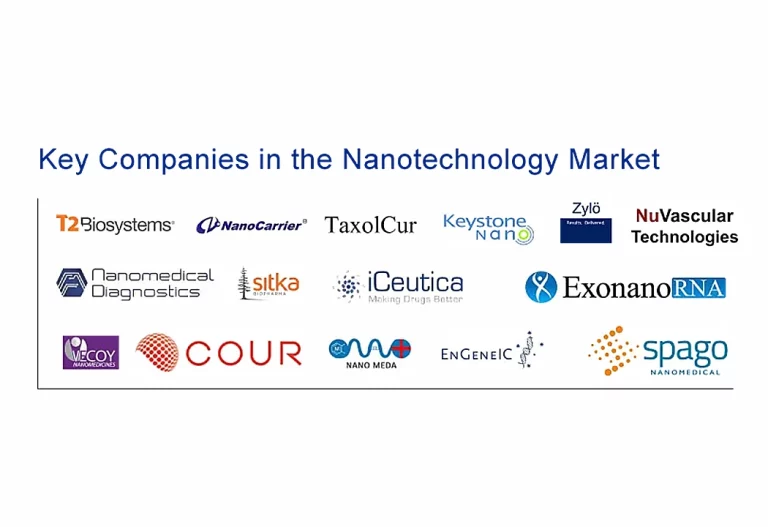Nanotechnology has always promised a revolutionary approach to healthcare. By exploring this technology at the molecular or even atomic scale, there’s the potential to transform how we diagnose, treat, and prevent various diseases. The following milestones highlight the significant strides made in the convergence of nanotechnology and healthcare:
1954: The concept of NP (Nanoparticles) in drug was introduced. This marked the beginning of the realization of the potential that nanoparticles hold in the realm of medicine.
1950-60: The concept of controlled release was introduced. This technology allowed for drugs to be released in a controlled manner over time, offering a more efficient and effective way of drug delivery to target sites.
1973: There was a shift in focus to NP for drug delivery and vaccination. Nanoparticles began to be seen as a viable medium for delivering drugs and vaccines, offering a more targeted approach and potentially reducing side effects.
1978-79: The use of magnetic NP for biomedical application came into the picture. Magnetic nanoparticles offer the potential for targeted drug delivery under the guidance of magnetic fields and are also used in some diagnostic applications.
1979-86: The application of NP for cancer therapy was explored. Given the challenges in cancer treatment, nanoparticles presented a new avenue for targeted therapy, ensuring that only cancer cells were affected, minimizing damage to healthy cells.
1987-89: The potential of anti-infective drug delivery using nanoparticles was realized. This offered a new way to combat infections by ensuring that drugs were delivered directly to the site of the infection.
1991-2003: There was a focus on DNA fragment and gene delivery using nanoparticles. This signified a move towards genetic interventions and therapies, offering treatments for diseases that were previously considered untreatable.
2004-05: NP for targeted cell therapy was explored. Instead of broad treatments, the focus shifted to treating individual cells, offering a more personalized approach to healthcare.
2006: A significant advancement was the ability to transport drugs across the blood-brain barrier. This barrier has always been a challenge in treating neurological conditions, but nanoparticles offer a potential solution.
Recent: In recent times, there’s been a focus on varieties of NP, especially for antiviral applications. Given the challenges posed by various viruses, nanoparticles offer a new method of combating them. Moreover, they are being seen as an alternative to antibiotics, potentially addressing the growing concern of antibiotic resistance.
These milestones not only signify the rapid pace of advancements in the field but also the immense potential that nanotechnology holds in revolutionizing healthcare. As research continues, there’s no doubt that we’ll witness even more transformative changes in the near future.








